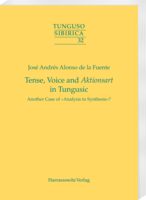|
weitere Titel zum Thema:
Download:
Ewenki and Manchu are very frequently quoted as the epitome of the more than obvious opposition existing within the Tungusic family between “more agglutinative” and “less agglutinative” languages, the latter exemplified by Ewenki, the former by Manchu. The position of Manchu within Tungusic languages has been always regarded as especial, if not slightly marginal. The traditional interpretation of such differences dictates that Manchu underwent many changes due to the influence of Chinese and Mongolian, among them its tendency towards analysis, in sharp contrast to the synthesis found in the rest of components of the family. For decades, the historical interpretation of these descriptive facts stated that Manchu was an innovative member, while the other Tungusic languages were more conservative, logically retaining more characteristics of the Proto-Tungusic period. While the effects of the contact with Chinese can hardly be denied in some areas of the Manchu grammar, many others await detailed research, something to be even more desirable when taking into account the plethora of available documentation. In the very same vein, Mongolian influences, though well motivated, still await to be properly described in a systematic fashion. In this study I will try to offer some evidences speaking against this traditional position by bringing into discussion morphological issues. Many of the (verbal) analytical formations typical of Manchu could be Proto-Tungusic retentions which in the Common Tungusic stage evolved into suffixes. This would explain why they are not attested in Common Tungusic historical languages, or they are but only partially.
|






